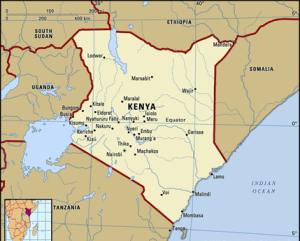TAG: GS 1: GEOGRAPHY
THE CONTEXT: The recent bursting of a dam in Kenya’s Nakuru County adds to a series of tragic events that have occurred due to heavy rainfall and inadequate infrastructure.
EXPLANATION:
- The incident highlights the vulnerability of communities to natural disasters and raises concerns about the effectiveness of disaster preparedness and response measures.
- As of April 27, all dams under the Seven Forks dams — which include Masinga, Kaburu, Gitaru, Kindaruma, and Kiambere — were at full capacity amid concerns of a massive overflow downstream within the next 24 hours.
- The Seven Forks dams, also known as the Seven Forks Hydro Stations, are a series of hydroelectric power stations located along the Tana River in Kenya.
- The dams are operated by the Kenya Electricity Generating Company (KenGen) and are designed to harness the energy potential of the river to generate electricity for the country.
- The dams are constructed in a cascading manner, with each dam taking advantage of the head created by the previous one to produce power. The dams are:
- Masinga Power Station: 40MW
- Kamburu Power Station: 94.20MW
- Gitaru Power Station: 225.25MW
- Kindaruma Power Station: 72MW
- Kiambere Power Station: 168MW
Cause of the Dam Burst and Impact
- The government of Kenya attributes the dam burst to a blockage in an underpass or tunnel that channels water to the Tongi river.
- The heavy rainfall in the region led to the deposition of debris, stones, and soil, which blocked the tunnel and ultimately caused it to burst.
- This highlights the susceptibility of infrastructure to damage during extreme weather events and underscores the importance of robust infrastructure planning and maintenance.
- The tragic event resulted in the loss of 45 lives, with a significant number of victims being children, women, and elderly men.
- The incident adds to the death toll from the ongoing long rainy season in Kenya, which has already claimed over 160 lives.
- The loss of lives underscores the urgency of improving disaster preparedness and response mechanisms to minimize casualties in future events.
Past Incidents
- The dam tragedy at the village of Kamuchiri near the town of Mai Mahiu is not the first one in Kenya.
- In 2018, a similar incident occurred at the Solai dam, also in Nakuru County in the Rift Valley during heavy rains, killing 48 people.
- It resulted from a makeshift private dam bursting its banks, sending water gushing downhill across homesteads.
- The recurrence of such events highlights the need for comprehensive risk assessment and mitigation strategies to address vulnerabilities in dam infrastructure.
- Additionally, lessons must be learned from past incidents to prevent similar tragedies in the future.
Community Impact and Response Efforts
- The bursting of the dam had devastating consequences for the affected communities, with homes destroyed, crops damaged, and farmlands submerged.
- The government, alongside organizations like the Kenya Red Cross, has launched a coordinated search and rescue operation to assess the full impact of the disaster and provide support to affected individuals.
- Medical attention and psychosocial support are being provided to survivors, highlighting the importance of holistic disaster response efforts.
Broader Implications and Regional Context
- The heavy rains and flash floods have not only affected Kenya but also neighboring countries like Tanzania, Uganda, Ethiopia, and Somalia.
- The widespread impact underscores the transboundary nature of natural disasters and the need for regional cooperation in disaster management and response.


